Some of these have probably been posted but as I was away on holiday I'm not sure, so here they are anyway:
The Lotus 2-Eleven – Track Day Driving Just Got Serious
Exceptional Performance Coupled with High Levels Of Usability and Safety
Geneva, Switzerland (6th March 2007), Lotus Sport, the race car performance arm of Lotus
Cars Ltd, today unveiled the new Lotus 2-Eleven. Launched at the 77th annual Geneva
International Motor Show, the Lotus 2-Eleven is aimed at the true track day enthusiast, taking
Colin Chapman’s philosophy of ‘Performance Through Light Weight’ to its most extreme level
yet.
Weighing in at just 670 kg (1,477 lbs) - dry weight with base specification - 745 kg (1639 lbs) -
kerb weight, fully loaded – and with 255 PS (252 bhp / 188 kw) on tap courtesy of its
supercharged and intercooled 1796 cc engine, the Lotus 2-Eleven boasts a power to weight
ratio similar to that of a 1960’s Formula One car. Designed with the most serious of track day
enthusiasts in mind, the Lotus 2-Eleven offers race car levels of performance coupled with
legendary Lotus Ride and Handling to deliver a truly outstanding track day car.
Said Mike Kimberley, Chief Executive Officer for Group Lotus plc: “The Lotus 2-Eleven takes
our core brand values to the extreme. It is the ultimate track day vehicle - not only
phenomenally quick, but also very user-friendly. In short, the 2-Eleven delivers everything that
the modern track day warrior and clubman racer demands, and more.”
Production of the Lotus 2-Eleven is scheduled to commence in April 2007 at the awardwinning
and world-class Lotus manufacturing facility at Lotus Headquarters in Hethel, Norfolk,
UK. The 2-Eleven build will be completed in dedicated Lotus Sport workshops and each
vehicle will be given a Lotus Sport build plate.
The Lotus 2-Eleven is initially available in Launch Edition specification only, which boasts a
dynamic and unique three-way Lotus Sport colour scheme complete with decal pack. The
Launch Edition is available in two versions - Road Going Version (UK Single Vehicle Approval)
fitted with front and rear lights, exhaust catalyst, single plane rear wing and other items to
achieve compliance with UK road legal requirements and Track Only Version with an
enhanced aerodynamics package including high downforce single plane carbon fibre rear wing, high downforce front splitter, brake lights and rear indicators and FIA approved driver’s
race seat.
The recommended selling price (incl UK VAT) of the Lotus 2-Eleven Launch Edition will be
£39,995. In the UK, the SVA version (Single Vehicle Type Approval) which includes delivery,
Pre Delivery Inspection, first service, number plates, first registration fee, valet, 12 months’
Road Fund Licence, a full tank of fuel and SVA test costs an additional £1,100. The Lotus 2-
Eleven is only available as a track-only option outside of the UK at 49,575 excluding local tax
in mainland Europe. Pricing in Japan, South Africa and Lotus other international markets will
be announced shortly.
The Lotus 2-Eleven in more detail
Engine
The supercharged and intercooled 1796 cc engine in the Lotus 2-Eleven has a maximum
power output of 255 PS (252 bhp / 188 kw) at 8000 rpm and a torque figure of approximately
242 Nm (179 lb/ft) at 7000 rpm. This significant amount of extra power and torque now
available together with the VVTL-i variable cam system ensures that there is a smooth and
linear surge of power from low engine speeds all the way to the maximum 8000 rpm. The
Roots-type Eaton M62 supercharger (with a sealed-for-life internal mechanism meaning that it
does not require the use of the engine’s oil) is run from the crankshaft and has an integral
bypass valve for part load operation. Four high capacity injectors and an up rated fuel pump
add additional fuel under hard acceleration or high speed driving.
An Accusump (engine oil accumulator unit) is included in the whole package as an oil reservoir
back-up for extreme track use ensuring that, under those conditions, the engine oil pressure
remains constant.
Twin oil coolers complete the powertrain package. Transmission
A sports-type clutch plate and heavy duty clutch cover transfer the engine power and torque to
the lightweight aluminium C64 six-speed gearbox (with an aluminium casing) – with the same
perfectly spaced ratios as the Exige S. An open type differential is fitted as standard. The
Lotus switchable Traction Control System (LTCS) works through the engine, reducing power
to maintain traction; it is active above 8 km/h (5 mph) and reacts much more quickly than
many brake-based systems.
Chassis & Integral Safety Features
The Lotus 2-Eleven uses a unique high-sided variant of the Lotus Elise lightweight chassis
structure featuring epoxy bonded aluminium alloy extrusions with modified Exige S based
running gear. This strong and stiff package features a comprehensive safety system with a
glass fibre reinforced composite front crash structure allied to a high sill chassis for side impact
protection. Additional chassis safety features include an FIA compliant 6-point rollover
structure with integral harness mounts and lightweight rear sub frame incorporating a further
crushable structure.
Body
The Lotus 2-Eleven features all new ultra-lightweight (40 kg / 88 lbs) composite bodywork
featuring core-mat technology. All external panels are bolted on for ease of removal,
maintenance and repair.
Wheels & Tyres
5-spoke lightweight forged black alloy wheels (front 7Jx16, rear 8J x 17) are shod with Lotus
Sport specific Yokohama A048 R LTS tyres (front 195/50 R16, rear 225/45 R17), designed to
maximise grip and achieve the exacting ride and handling targets set by Lotus. Brakes
The brake system includes 288 mm cast iron cross drilled and ventilated discs, upgraded
Pagid RS14 sports brake pads set into the brake calipers (aluminium alloy AP Racing 2-piston
at the front and Brembo single sliding piston at the rear), high grade silicone brake fluid and
stainless steel braided hoses. In addition, the proven Lotus track tuned servo-assisted fourchannel
ABS system enhances braking performance and minimises stopping distance without
taking over from the skill of the driver.
Suspension
Fully independent suspension utilising unequal length wishbones; Öhlins 2-way adjustable
dampers with coil over springs and Lotus Sport adjustable front anti-roll bar. A rear double
shear track control arm brace is provided to cope with the expected kerb abuse during heavy
track day driving, with unique steering arms and front upper wishbones to suit ultra-low ride
height.
Performance
0-60 mph 3.8 secs (estimated)
0-100 km/h 3.9 secs (estimated)
0-160 km/h (0-100 mph) 9.1 secs (estimated)
Max Speed 155 mph (250 km/h)
Max Power 255 PS (252 bhp / 188 kw) at 8000 rpm
Max Torque 242 Nm (179 lb/ft) at 7000 rpm
http://www.midlandslotus.co.uk/forum/uploa...pr_download.pdf
http://www.midlandslotus.co.uk/forum/uploa...pr_download.pdf
‘EVE HYBRID’ TECHNOLOGY DEMONSTRATOR SHOWCASES
RETRO-INTEGRATION OF HYBRID SOLUTIONS
An Innovative R & D project by Lotus Engineering and Proton Holdings Bhd features
hybrid solutions that deliver up to 22% CO2 reduction and are advancing towards
readiness for integration into current models.
Lotus Engineering will unveil the ‘EVE Hybrid’ (Efficient, Viable, Environmental) technology
demonstrator at the 77th Geneva International Motor Show. Developed for, and in close R & D
Engineering cooperation with, our shareholder, Proton Holdings Bhd, it showcases how OEMs
can introduce lower emissions variants to existing model ranges that currently only offer
conventional gasoline and diesel powertrains.
Lotus Engineering believes the application of hybrid technology is a key route for CO2
emissions reduction and that for the next five years it may remain more viable to integrate
hybrid technologies into existing model ranges than to develop expensive new dedicated
hybrid platforms. Solutions that Lotus Engineering can provide to its OEM clients will help
them keep price premiums for hybrid variants at a minimum, thanks to lower development
costs, and are available immediately for introduction within current and next generation model
lifecycles.
The EVE Hybrid programme is focussed on establishing the processes for integrating hybrid
technology with minimal development time and cost, overcoming many of the challenges
associated with integrating hybrid technology into existing platforms through intelligent,
compact and discreet packaging of additional systems.
Ultimately, Lotus Engineering’s solutions aim to provide strong, viable business case
propositions for our OEM clients to offer a hybrid variant of a medium-high volume production
car.
The research and development programme was undertaken by a cross-functional team of
Lotus and Proton engineers working seamlessly together at Lotus Engineering’s Hethel
headquarters and Shah Alam, Kuala Lumpur. The resulting EVE Hybrid demonstrator, based
on a Proton Gen.2 compact midsize car with a 1.6litre gasoline engine, showcases a trio of
production-representative technologies:
(1) a ‘micro-hybrid’ start-stop system
(2) a full parallel hybrid drive
(3) Continuously Variable Transmission
Compared to the baseline Proton Gen.2, tailpipe emissions are reduced from a competitive
172g/km to just 134g/km, a reduction of 22%, while fuel economy improves from 39.2mpg to
50.2mpg, a 28% improvement.
Mike Kimberley, Chief Executive Officer of Group Lotus plc, said: “The technologies and knowhow
showcased in the EVE Hybrid are the latest addition to our suite of efficient performance
solutions for the industry. As an automotive consultancy and Global OEM, Lotus is able to
manage all elements of a hybrid integration project under one roof, with extensive drivetrain,
vehicle, electrical and control systems expertise from design and development through to
production. Our technologies and world-class engineering capabilities mean we are in a great
position to help OEMs apply advanced hybrid technology to their products in order to reduce
average CO2 emissions.”
Mr Kimberley continued: “This project is yet another example of how the Proton / Lotus family
continues to successfully deliver exceptional projects and products and the EVE Hybrid
technology we have developed further reinforces the Group’s position as creative technology
leaders in ‘green’ automotive engineering. The addition of the EVE Hybrid solutions to Lotus
Engineering’s extensive capabilities, together with the experience of developing our Bio
Ethanol flex-fuel Lotus Exige 265E means that Lotus Engineering is an ideally placed high
Technology organisation suited to helping the global industry to find a solution for future low
emission personal transport needs.”
Technologies in the EVE Hybrid technology demonstrator
A number of the technologies featured in the EVE Hybrid are production-ready, employing
systems deliberately sourced from established tier one suppliers in order to demonstrate the
availability of components, the minimisation of development costs and to maximise business
case viability.
The EVE Hybrid features three key technologies:
(1) ‘Micro-hybrid’ stop-start system:
A starter-alternator system was integrated that switches the engine off when the vehicle stops,
during town driving for example. The engine restarts automatically when the brake pedal is
released.
As a result, noise, emissions and fuel consumption are reduced. The unit runs on the standard
vehicle 12volt electrical system and combines both starter motor and alternator functionality.
Fuel savings of 5% have been demonstrated with a 5% reduction in CO2 emissions.
(2) Full parallel hybrid technology:
A bespoke 30kW, 144V motor is packaged between the engine and transmission. It delivers
electric drive or regenerative braking via an additional clutch linking the motor to the drivetrain.
The motor provides the same start-stop functionality as the micro-hybrid with the additional
benefit of electrical drive or drive assist, either boosting the drivetrain performance or providing
economy and emissions benefits by operating as an electric vehicle. The motor is powered by
a 144 volt battery located in the boot.
Testing has confirmed simulation predictions of 28% fuel efficiency improvement and 22% CO2
emissions reduction.
(3) Continuously Variable Transmission (CVT)
The CVT is a transmission in which the ratio between the input and output shaft can be varied
continuously within a given range, providing an infinite number of possible ratios. The
integration of a CVT gives benefits in fuel consumption and emissions control. In addition, its
compact package assisted in the application of a hybrid electric drive and it provides smooth
acceleration and low transmission noise.
Performance benefits of EVE Hybrid technologies
Extensive performance and drive cycle modelling of a production hybrid variant using the
technologies on the EVE Hybrid indicate the following comparative vehicle performance
figures:
(1) EVE Hybrid in micro-hybrid mode with start-stop system:
MPG: 41 (5% increase from baseline)
Max torque: 148Nm @ 4000rpm
Max power: 82kW / 110hp @ 6000rpm
0-62 mph (0-100kph): 12.6 sec
Top speed: 118mph
CO2: 164g/km (5% reduction from baseline)
(2) EVE Hybrid with full parallel hybrid configuration:
MPG: 50.2 (28% increase from baseline)
Max torque: 233Nm (limited to180Nm continuous) @ 1500rpm
Max power: 105kW / 141hp @ 5500rpm
0-62 mph: 9 sec
Top speed: 118mph
CO2: 134g/km (22% reduction from baseline)
(3) Continuously Variable Transmission configuration
MPG (EU combined cycle): 41 (5% increase from baseline)
Max torque: 148Nm @ 4000rpm
Max power: 82kW / 110hp @ 6000rpm
0-62 mph (0-100kph): 12.6 sec
Top speed: 118mph
CO2 (combined cycle): 164g/km (5% reduction from baseline)
Proton Gen.2 1.6litre 4-cyl gasoline (manual transmission) baseline for comparison:
MPG (EU combined cycle): 39.2
Max torque: 148Nm @ 4000rpm
Max power: 82kW / 110hp @ 6000rpm
0-62 mph (0-100kph): 12.6 sec
Top speed: 118mph
CO2 (combined cycle): 172g/km
Technical details of EVE Hybrid technology demonstrator
Engine
Various changes have been made to the Proton gasoline 1597cc CamPro engine. The main
modification is the redesign of the front end accessory drive (FEAD). This was done to
accommodate a Valeo ‘StARS’ starter/alternator, which drives the micro hybrid start-stop
system.
The redesigned FEAD also accommodates a Sanden hybrid Heating Ventilation and Air
Conditioning (HVAC) compressor that operates by conventional belt drive and has an
additional electrically driven capability which enables continued air conditioning operation
when the engine is stopped.
During the FEAD redesign the opportunity was also taken to replace the belt driven Power
Assisted Steering (PAS) and water pumps with electric units to enable the investigation into
the economy benefits of such units.
To accommodate the additional hybrid functionalities the Engine Management System (EMS)
was updated to a Siemens VDO torque-based unit and re-calibrated by Lotus Engineering.
Motor/Generator
Due to tight packaging constraints and to minimise any loss in overall vehicle performance,
bespoke electric motor and power electronics were developed in conjunction with specialist
suppliers ElektroMagnetix and Turbopower Systems. The motor/generator and power
electronics are water-cooled and include an auxiliary power unit to support the vehicle’s 12volt
systems.
An additional clutch supplied by AP Racing is packaged inside the motor and connects the IC
engine to the traction motor. This enables the engine to be switched off for electric drive only
use.
Gearbox
A Punch Continuously Variable Transmission (CVT) has replaced the conventional
transmission and a modified bell housing accommodates the electric traction motor.
Battery Pack
The EVE Hybrid uses a Cobasys Series 1000, NiMH, 30kW 144V module that incorporates an
integrated cooling system. This traction battery pack is securely mounted on the boot floor,
displacing approx 47 litres of luggage space.
Control System
A sophisticated bespoke Lotus Engineering control system was developed to implement the
energy management function by monitoring and controlling all sub-control systems including
the engine management, motor/generator, transmission, HVAC, additional clutch,
starter/alternator and battery pack.
Brake System
To maintain the integrity of the braking circuit when the petrol engine is off, a Mes-Dea electric
vacuum pump maintains the vacuum assist for the brakes.
Steering System
An off-the-shelf TRW electro-hydraulic power assisted steering pump has been fitted, which
allowed the retention of the existing steering column and hydraulic steering gear. This pump
also provides hydraulic pressure for the additional clutch that engages the hybrid motor.
Interior
The instrument panel incorporates an additional LCD display developed by Lotus Engineering
to show battery charge, power split between engine and motor, fuel economy and
charge/discharge rate, and incorporates associated warning indicators where appropriate.
Also fitted to the dash are new switches to select the car’s operating mode - micro hybrid, full
hybrid or electric vehicle.
http://www.midlandslotus.co.uk/forum/uploa...pr_download.pdf
Lotus Launches the Exige GT3 Concept Road Vehicle
UNLEASHED! The Most Extreme Exige Variant To-date
Geneva, Switzerland (6th March 2007), Lotus Sport, the race car performance arm of Lotus
Cars Ltd, today unveiled the Lotus Exige GT3 concept road vehicle. With its debut at the 77th
annual Geneva International Motor Show, the 275 PS (271 bhp / 203 kW) Exige GT3 is a bold,
no-holds-barred, lap record-breaking, breathtaking performance machine that embraces all
that is expected of a race-bred Lotus.
Building on the Lotus racing pedigree, this concept car can deliver more grin-factor than ever
before; there are no intended compromises and no limits except those that are self imposed by
the driver.
This is one concept that commands your full attention.
Said Mike Kimberley, Chief Executive Officer for Group Lotus plc:
“The Exige GT3 concept road car is a fantastic showcase product from our race car
performance division, Lotus Sport. The car’s racing background becomes immediately
obvious from its aggressive stance, extreme width of rear track and innovative threedimensional
rear wing. The foundation of all Lotus products is phenomenal handling and ride
characteristics, but the Exige GT3 takes these into another dimension altogether where
supreme road holding and outrageous acceleration come evenly matched with sensational
stopping ability.”
The Exige GT3’s pure bred racing brother will be again competing in the GT race arena in
2007, taking over the mantle from the hugely successful 2006 British GT3 Championshipwinning
car. On road or track the Lotus Exige GT3 winning pedigree will continue in time
honoured Lotus racing tradition.
A new one-piece front clam-shell with fully masked front wheels and wheel arch venting leads
the aerodynamically cleaned silhouette of this car. A menacing stance is enhanced by the
aggressively flared rear wheel arches and aero-efficient three-dimensional rear wing and
blended end-plates. The visual message is clear; this vehicle means business and the squat
wide hindquarters symbolise the latent power harnessed within.
That power is provided by the same charge-cooled supercharged engine that the GT3 race car
employs, producing 275PS (271bhp / 203kw) driven through ten inch rear wheels with 255
width tyres making the final connection to the road. Max speed (257kph / 160mph) and peak
torque have been electronically limited but acceleration is left untouched and unimpaired. The
up-rated front brakes and brake pads all round ensure that on road or track this car’s stopping
ability is more than capable of harnessing its acceleration performance.
The end-plate mounted three-dimensional rear wing is highly efficient and fully complements
the widened and flattened rear deck shape in reducing the overall drag as well as maintaining
front to rear downforce balance. The performance of this car will amaze and reward all drivers
with incredible road holding (developed with the help of its 2-way Ohlins adjustable dampers
together with Lotus Sport adjustable front stabiliser bar and rear suspension double-shear
track control arms) and stunning acceleration.
Simply put, the Lotus Exige GT3 will redefine your concept of a road car by re-affirming that
unique proposition that is, above all else, a Lotus.
It is intended that the Lotus Exige GT3 concept road vehicle will be further developed into a full
production car for limited markets, to go on sale in late 2007 with an estimated price tag of
between £50,000 and £60,000.
The Lotus GT3 in more detail
Engine
The supercharged and chargecooled 1796 cc engine in the Lotus GT3 has a maximum power
output of 275 PS (271 bhp / 203 kw) at 8000 rpm and a torque figure of approximately 258 Nm
(190 lb/ft) at 7000 rpm. This significant amount of extra power and torque now available
together with the VVTL-i variable cam system ensures that there is a smooth and linear surge
of power from low engine speeds all the way to the maximum 8000 rpm. The Roots-type
Eaton M62 supercharger (with a sealed-for-life internal mechanism meaning that it does not
require the use of the engine’s oil) is run from the crankshaft and has an integral bypass valve
for part load operation. Four high capacity injectors and an up rated fuel pump add additional
fuel under hard acceleration or high speed driving.
An Accusump (engine oil accumulator unit) is included in the whole package as an oil reservoir
back-up for extreme track use ensuring that, under those conditions, the engine oil pressure
remains constant.
Twin oil coolers complete the powertrain package.
Transmission
A sports-type clutch plate and heavy duty clutch cover transfer the engine power and torque to
the lightweight aluminium C64 six-speed gearbox – with the same perfectly spaced ratios as
the Exige S. An open type limited slip differential is fitted as standard. The Lotus switchable
traction control system (LTCS) works through the engine, reducing power to maintain traction;
it is active above 8 kph (5 mph) and reacts much more quickly than many brake-based
systems.
Chassis Structure
Lotus designed lightweight structure of epoxy bonded aluminium alloy extrusions with crash
structure, extruded aluminium door beams, integral steel seat-belt support structure and
lightweight galvanized steel rear sub frame incorporating a structural shear panel.
Body
GT3 derived one-piece front clamshell and wide track rear clamshell with full length roof scoop
design taken from the Cup Exige 255. New full width rear wing with integral end plates
mounting to rear clam. Race style full width front splitter; standard Exige door and body sides
retained. Multi element rear diffuser with carbon option.
Wheels & Tyres
5--spoke lightweight forged alloy wheels (front 7Jx16 and rear 10Jx17) are shod with Lotus
Sport specific Yokohama A048 R LTS tyres (front 195/50 R16 and rear 255/40 R17), designed
to maximise grip and achieve the ride and handling targets set by Lotus.
Brakes
The brake system includes 308 mm diameter 2 piece aluminium belled cross drilled and
ventilated front discs and 288 mm diameter cross-drilled and ventilated rear discs. AP Racing
two-piece radially mounted 4 piston calipers at the front and Brembo single sliding piston at
the rear. Pagid RS14 sports brake pads all round. High grade silicone brake fluid; stainless
steel braided brake hoses. In addition, the proven Lotus track tuned servo-assisted fourchannel
ABS system enhances braking performance and minimises stopping distance without
taking over from the skill of the driver.
Suspension
Fully independent suspension utilising unequal length wishbones; Öhlins 2-way adjustable
dampers with coil over springs and Lotus Sport adjustable front anti-roll bar. A rear double
shear track control arm brace is provided to cope with the expected kerb abuse during heavy
track day driving.
Performance
0-60 mph 3.9 secs (estimated)
0-100 km/h 4.0 secs (estimated)
0-100 mph 9.8 secs (estimated)
(0-160 km/h)
Maximum Speed 160 mph (257 km/h) - electronically limited
Max Power 275 PS (271 bhp / 203 kw) at 8000 rpm
Max Torque 258 Nm (190 lb/ft) at 7000 rpm (electronically limited)
http://www.midlandslotus.co.uk/forum/uploa...pr_download.pdf
http://www.midlandslotus.co.uk/forum/uploa...pr_download.pdf
Lotus Engineering launches ‘Integrated Exhaust Manifold’ Design Capability
Cuts Cost, Emissions and Weight
Lotus Engineering will showcase a highly advanced cylinder head with integrated exhaust
manifold (IEM) at the 77th Geneva International Motor Show. The production-ready technology
can significantly reduce manufacturing costs, emissions and weight on most gasoline-engined
passenger vehicles.
The cylinder head on display, for a small 3-cylinder engine, is the latest of a number of IEM
designs developed by Lotus Engineering as part of its world-renowned consultancy business.
Following its development programmes, the UK automotive engineering consultancy estimates
that for a typical DOHC 16-valve 1.6 cylinder gasoline engine, an IEM has potential to:
· cut up to 5% of the total build cost
· reduce catalyst light-off time by up to 20% (approx five seconds)
· reduce powertrain mass by up to 5 kg
· improve engine durability
Geraint Castleton-White, head of powertrain, Lotus Engineering said: “Two key drivers for
OEM’s are cost-down and the reduction of CO2 emissions. Our IEM technology brings to a
practical reality an established principle that has been very challenging to implement in
production. Over a series of design projects, we have developed a proven expertise in the
application of IEM designs, and we can now deliver the significant benefits of this technology
to our clients.”
Mike Kimberley, Chief Executive of Group Lotus plc, said: “Efficient performance is a core
focus of Lotus Engineering and we are working on many ways to drive down CO2 emissions.
With our numerous on-going bio-fuel, Hybrid and electric vehicle projects based on Lotus’
fundamentally ecologically-designed products using all-aluminium low weight structures for
exceptional fuel economy with extreme driving pleasure, we are continually reinforcing our
position as world leaders in ‘green’ automotive engineering.”
By integrating the manifold tracts into the cylinder head the parts count is reduced significantly,
saving costs throughout the development cycle and supply chain, from inventory and
assembly to aftermarket supply.
Emissions reduction is achieved by locating the catalyst very close to the cylinder head which
reduces exhaust gas heat loss upstream thereby cutting the catalyst light-off time. The
reduction in overall engine heat loss is achieved through minimising the surface area of the
manifold by keeping the exhaust tracts within the head. Through intelligent cooling jacket
design, heat is retained in the engine rather than lost to the engine bay, accelerating engine
warm-up so it more quickly reaches optimal efficiency. This also benefits the HVAC
performance, reducing windscreen demist and passenger cabin warm-up periods.
Engine durability is improved as a result of the reduction of thermal stresses in the engine.
With the exhaust manifold integrated into the cylinder head, the stresses usually associated at
the interface of different materials, for example where the cast iron exhaust and the aluminium
cylinder head meet in a conventional design, are eliminated. Also, due to the design of the
cooling jacket and coolant routing, the coolant heats up far quicker, resulting in a more uniform
heating of the entire engine, again contributing to reduced stresses in the engine.
Integrating the exhaust manifold reduces the mass of the engine, further increasing overall
vehicle efficiency. It also results in a more compact overall engine and reduced packaging
demands for the engine under the hood, delivering a range of subsequent benefits for vehicle
packaging.
Lotus Engineering has already proved the concept to production readiness in several
demonstrator programmes with a variety of cylinder head configurations.
Detailed benefits:
· Ultra-low CO2 emissions with reduced cost
o Reduction in emissions through faster light-off of close-couple catalytic converter
o Reduced BOM and assembly cost
o Reduced catalyst loading requirement
· Vehicle integration benefits
o Reduced overall weight
o Reduced package space requirements
o Improved underhood thermal management
o Faster cabin heater warm-up
o Higher vehicle integration flexibility
o Improved NVH
· Additional benefits
o Reduced windscreen demist time
o Reduced thermal distortion
o Improved overall engine durability
http://www.midlandslotus.co.uk/forum/uploa...pr_download.pdf
Luxury Touring Pack Option for Lotus Europa S
More Choice for the Discerning Lotus Driver
The Europa S, the Lotus that introduces the brand to enhanced levels of practicality and
refinement, has a new Luxury Touring Pack Option which stretches the Europa S towards the
more luxurious end of the spectrum.
The Luxury Touring Pack Option dresses the interior in the smart attire of saddle tan leather,
chocolate coloured leather and brown carpets. Where the standard Europa S uses lightweight
composite components for items such as the steering column shroud, dash top, instrument
and ventilation binnacles and sill covers, the Luxury Touring Pack Option on the Europa S
covers these and other components with four hides of soft high-grade saddle tan coloured and
chocolate coloured leather. Supportive sports seats are fitted and are also clad in saddle tan
and chocolate coloured leather in a stripe pattern. Safety critical composite components such
as the passenger airbag door are coated in a high-tech soft-to-the-touch material. An engine
start button and a solid Walnut and Tulip wood gearknob finish off the interior package.
The Luxury Touring Pack Option also stretches to the boot: with brown carpet covering the
whole of the boot area including the battery cover, a saddle tan coloured leather trimmed
tailgate inner, luggage straps to prevent luggage from moving in the boot (Lotus still expects a
laden Europa S to be driven hard!), and a saddle tan coloured leather oddment bag which is
fixed to the boot compartment.
Exterior additions to the Luxury Touring Pack Option include tinted rear and rear three-quarter
glass, body coloured front driving lamp surrounds, side air-intake surrounds and roof air-outlet
grill. All other exterior grilles such as the front radiator grilles and the rear light grille surrounds
are coloured silver.
All these added luxuries add very little weight to the feather-light Europa S so spirited drivers
will not be penalised by opting for the Luxury Touring Pack.
Availability
The Luxury Touring Pack Option is available on the Lotus Europa S from April 2007 priced at
£1,250 in the UK and 1,750 in Europe (excluding local taxes), with prices in other markets to
be announced shortly.
http://www.midlandslotus.co.uk/forum/uploa...pr_download.pdf




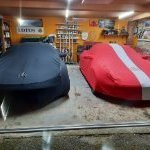




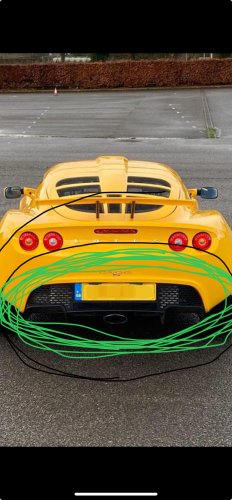
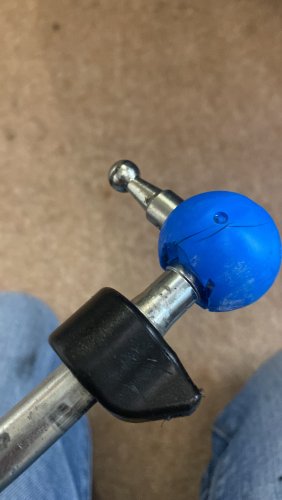
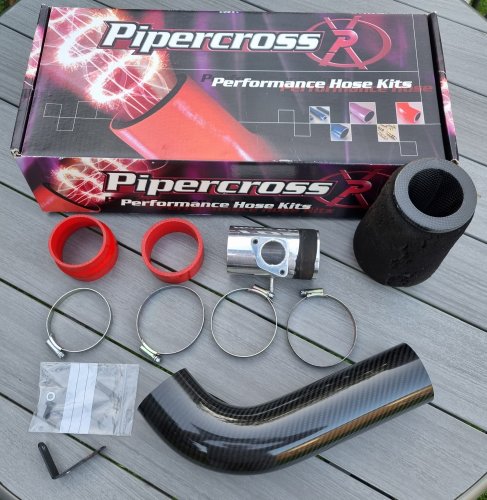
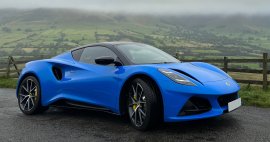
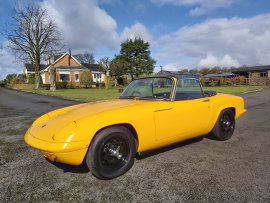
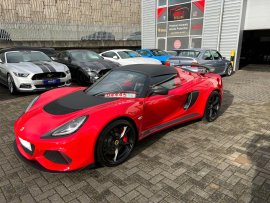

Recommended Comments
There are no comments to display.
Join the conversation
You can post now and register later. If you have an account, sign in now to post with your account.